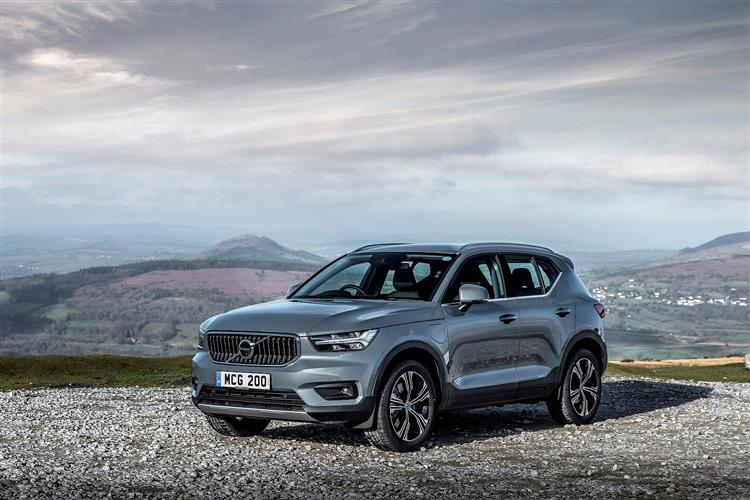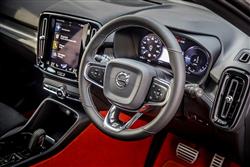PLUGGING AND PLAYING (some text hidden) --NONE--
By Jonathan Crouch
Introductionword count: 50
At the end of this century's second decade, Volvo introduced a range of 'Recharge' Plug-in versions of its little XC40 SUV. Buyers had the choice of a Plug-in Hybrid or a full-EV. It's the Plug-in Hybrid, sold between 2019 and 2023, that we look at here as a used buy.
Modelsword count: 3
5dr SUV (PHEV)
Historyword count: 189
The XC40 compact SUV was the last of Volvo's models to get electrification, but it was also the first of the company's cars to get a full-EV electric version, the XC40 P8 Recharge, which arrived in 2019. At the same time, for those who couldn't quite face the thought of going for an all-out EV (or shouldering that top variant's plump price), then Volvo introduced the Recharge Plug-in hybrid derivative look at here, hoping that it might be more palatable. This PHEV was originally offered in T5 form, but a more affordable only slightly lowered-powered T4 version arrived a year late and carried on selling when the T5 Plug-in was deleted in 2021. The T4 Plug-in sold until the end of 2023. On the used market, an XC40 Plug-in Hybrid will hardly be inexpensive, but it can offer up to 27 miles of all-electric driving before needing to revert to its three cylinder 1.5-litre petrol engine. Compromises over the ordinary XC40 model are as few as the visual changes made and there are plenty of driving mode options to ensure that you can maximise the innovative powertrain's impressive efficiency.
What You Getword count: 296
Visually, unless you happened to pick up the addition of a charging port near the front wheel arch, you probably wouldn't spot any differences between this Plug-in hybrid variant and a more conventional XC40 - and that's exactly the way Volvo wanted it. So there's the usual XC40 'robot-inspired' styling, plus piercing 'Thor's Hammer' LED headlights and a clamshell bonnet, along with an inverted front grille and coupe-like rear styling. Inside, the cabin initially seems identical to that of an ordinary combustion-engined variant, which means there's a real premium feel. As usual with an XC40, there's a digital instrument cluster - you can vary it via 'Glass', 'Minimalist', 'Performance' and 'Chrome Rings' layout options. And the right hand virtual dial switches between being a rev counter (as it is in the 'Power' and 'Off Road' driving modes) to being and hybrid driving gauge (in the 'Hybrid' and 'Pure' mode settings). You have to look quite closely for this cabin's other EV-orientated touches; things like the extra 'B' option on the gearshift and the selectable 'Driver Performance' screen on the centre-dash monitor, that option showing a powertrain energy graphic. That centre-dash monitor, a 9-inch central touchscreen, is powered by Android, which means you get a raft of over-the-air Google features, including Maps and YouTube Music built in. Rear seat room has always been an XC40 strongpoint - it beats most class rivals in this regard: two adults will be very comfortable, even on longer trips. As mentioned earlier, impressively, unlike most PHEVs, the batteries used in this installation don't affect boot space (because they're lined along the car's spine, rather than under the rear floor). So the ordinary XC40 model's 452-litre luggage capacity figure is unaffected and will be quite sufficient for the needs of most owners.
To see the full road test text contact us on 0330 0020 227
Pictures (high res disabled)

.jpg)
|
.jpg)
|
.jpg)
| |||
.jpg)
|
.jpg)
|
.jpg)
| |||
.jpg)
|
.jpg)
|
.jpg)
| |||
.jpg)
|

|
Scoring (subset of scores)
Category: Hybrid, Plug-in, Electric & Hydrogen
| Performance | |
| Handling | |
| Comfort | |
| Space | |
| Styling, Build, Value, Equipment, Depreciation, Handling, Insurance and Total scores are available with our full data feed. | |



